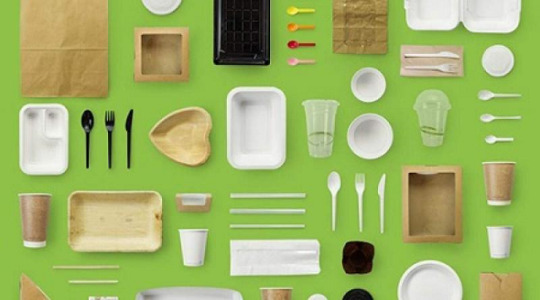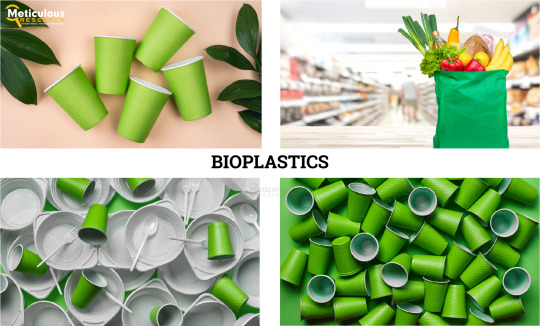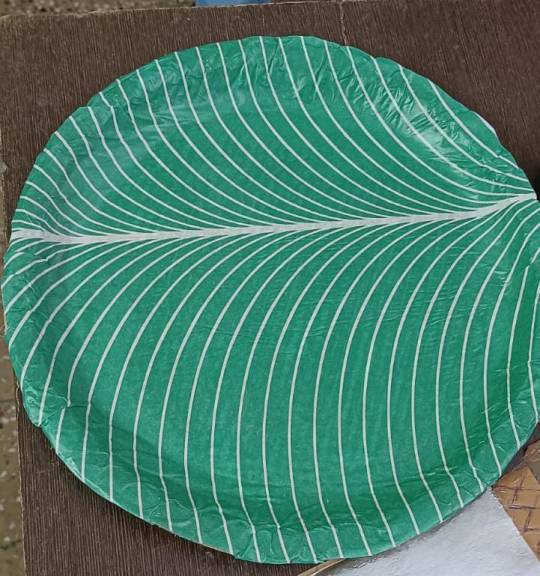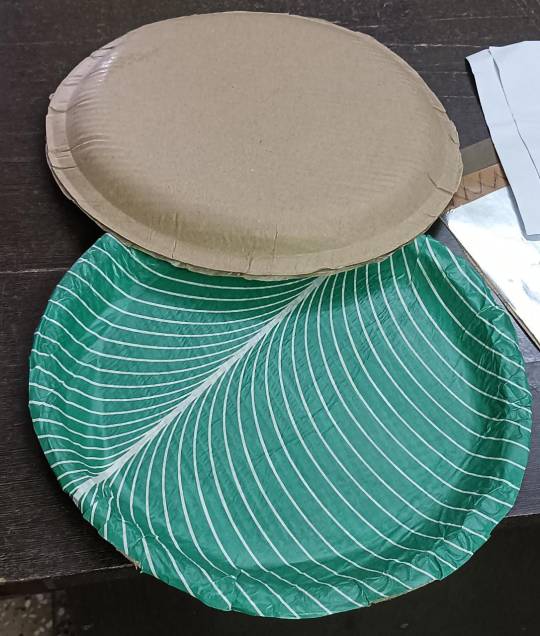#PlasticAlternatives
Text
Understanding the Dynamics and Potential of the Bioplastic Packaging Market in a Changing World
The global bioplastic packaging market size is expected to reach USD 50.57 billion by 2030, according to a new report by Grand View Research, Inc., expanding at a CAGR of 16.9% from 2022 to 2030. The growth of the global plastics packaging industry is likely to be driven by the increasing consumption of plastics in packaging food, beverages, cosmetics, personal care, and consumer goods.

Bioplastic Packaging Market Report Highlights
The biodegradable material segment is expected to expand at the highest CAGR of 17.3% from 2022 to 2030, aided by the increasing demand for sustainable packaging, strict regulation of commercial plastics, and growing consumer preference for eco-friendly plastic
The flexible packaging segment is projected to advance at the fastest CAGR of 18.1% during the forecast period, owing to its applicability and functionality of offering excellent protection against environmental factors (air and water) to the packaged goods, wide availability, lightweight, and less complex manufacturing process than rigid packaging
Food and beverages emerged as the leading application segment and is further expected to expand at a CAGR of 17.1% from 2022 to 2030
The global bioplastics packaging market is highly competitive and fragmented in nature, with the presence of various key players such as BASF SE, NatureWorks LLC, SABIC, Braskem, M&G Chemicals, Teijin Limited, and Toray Industries, as well as a few medium- and small-scale regional players across the globe
For More Details or Sample Copy please visit link @: Bioplastic Packaging Market Report
Bioplastics are plastics that are made from renewable sources such as corn, sugarcane, potato, wheat, rice, vegetable oil, or cellulose. There are two types of bioplastics, namely biodegradable plastics and non-biodegradable plastics. Biodegradable plastics include polylactic acid, starch blends, PBAT, and PBS, while non-biodegradable plastics include polyethylene, polyethylene terephthalate, polyamide, and polytrimethylene terephthalate.
Bioplastic packaging is considered to be an environment-friendly solution and helps enhance the final product’s appearance. Growing usage of bioplastics in flexible packaging is expected to fuel market growth. The growing demand for food, due to the rising global population, is a key factor driving the demand for flexible packaging. Moreover, the packaged food industry in the U.S. and Europe has grown tremendously in recent years. Furthermore, increasing concerns regarding toxins in petrochemicals, along with depleting crude oil reserves, are driving the development of bio-based polymers.
Regulations by most governments restricting the consumption of petroleum-based plastics in certain applications such as food packaging and medical devices are expected to further incentivize bioplastic production in the plastics industry. However, the high cost as compared to conventional plastics is a major factor restraining the market growth. Currently, low prices of conventional plastics are making it difficult for bioplastics to achieve competitive pricing.
#BioplasticPackaging#SustainablePackaging#EcoFriendlyMaterials#GreenPackaging#BiodegradablePackaging#CircularEconomy#PackagingInnovation#EnvironmentallyFriendly#BioBasedMaterials#PlasticAlternatives#PackagingSolutions#Bioplastics#SustainableBusiness#GreenTechnology#PackagingTrends#EnvironmentalImpact#BioPackaging#PackagingIndustry#ReducingPlasticWaste#FutureOfPackaging
0 notes
Text
Bioplastics Market - Share, Growth, Industry Analysis - 2029
According to a new market research report, “Bioplastics Market by Type (Starch-based, PLA, PHA, Polyester, Bio-PET, Bio-PE, Bio-PTT, Bio-PA), Application (Packaging, Automotive, Consumer Electronics, Construction, Agriculture, Textile), and Geography — Global Forecasts to 2029”, published by Meticulous Research®, the bioplastics market is expected to grow at a CAGR of 13.1% from 2022–2029 to reach $25.93 billion by 2029.
The major factors driving the growth of bioplastics market are the increasing consumer preference for biobased products over synthetic products, increased usage of bioplastics in the packaging industry, increased utilization of flexible packaging by the food & beverage industry, and rising R&D in bioplastics.
Furthermore, regulations & legal acts supporting bioplastics usage and untapped markets in emerging economies are some of the major factors expected to offer significant growth opportunities for players operating in this market. However, the specific requirements for the biodegradation process are expected to hamper the growth of this market.
Download Free Sample Report Now https://www.meticulousresearch.com/download-sample-report/cp_id=5250
Impact of COVID-19 on the Bioplastics Market
The global economy was severely affected by the COVID-19 pandemic in 2020 due to the implementation of nationwide lockdowns and social distancing measures worldwide. All economic activities, including manufacturing throughout value chains and investments, came to a halt.
The pandemic, like other industries, also impacted the bioplastic industry. During the COVID-19 pandemic, there were unavoidable negative shifts due to a surge in demand for single-use plastics for manufacturing face shields or personal protective equipment and food and groceries delivery packaging. For instance, the Japanese Ministry of Finance, Trade, and Industry recorded that more than 600 million face masks were required in April 2020.

Scope of the Report:
Bioplastics Market, by Type
Polyester (PBS, PBAT, and PCL)
Starch-based
Polylactic Acid
Polyhydroxyalkanoates (PHA)
Other Biodegradable Bioplastics
Bio-polyethylene (PE)
Bio-polytrimethylene Terephthalate (PTT)
Bio-polyamide (PA)
Bio-polyethelene Terephthalate (PET)
Other Non-biodegradable Bioplastics
Bioplastics Market, by Application
Flexible Packaging
Rigid Packaging
Bioplastics Market, by Geography
China
Japan
India
South Korea
Australia & New Zealand
Rest of APAC (RoAPAC)
Germany
France
U.K.
Italy
Spain
Rest of Europe (RoE)
U.S.
Canada
Speak to our Analysts to Understand the Impact of COVID-19 on Your Business
Also, according to the World Health Organization, an increase of 40% in manufacturing capacity was needed due to the increased demand for surgical masks, examination gloves, and goggles when the COVID-19 pandemic was at its peak. Furthermore, virgin plastic became cheaper than biodegradable plastics due to a decline in oil prices in 2020, negatively impacting the demand for bioplastics.
However, the relaxations of social distancing norms and the effects of the COVID-19 pandemic with the resumption of logistics and production facilities are expected to provide bioplastics companies with significant growth opportunities in the coming years. Furthermore, the demand for bioplastics is expected to gradually increase to avoid the utilization of single-use plastics.
There are several emerging initiatives to promote a green recovery, which are expected to speed up the production of bioplastics. For instance, the European Union is working towards the 2050 net-zero emissions goal. This initiative was aimed at tackling the ever-growing environmental and sustainability crisis by implementing the European Green Deal.
To gain more insights into the market with a detailed table of content and figures, click here: https://www.meticulousresearch.com/product/bioplastics-market-5250
Bioplastics Market Overview
The overall bioplastics market is segmented based on type {biodegradable bioplastic (starch-based bioplastic, polylactic acid [PLA], polyhydroxyalkanoates [PHA], polyester [PBS, PBAT, AND PCL], and other biodegradable plastics), non-biodegradable bioplastics (bio-polyethylene [PE], bio-polyethylene terephthalate [PET], bio-polyamides [PA], bio-polytrimethylene terephthalate [PTT], and other non-biodegradable plastics)}, application (packaging [flexible packaging and rigid packaging], automotive & assembly operation, consumer electronics, agriculture & horticulture, construction, textile, and other applications), and geography. The study also evaluates industry competitors and analyzes the market at the country level.
Based on type, the biodegradable bioplastics segment is estimated to register the fastest growth rate during the forecast period. The growth of this segment is primarily attributed to their wide range of industrial applications and the rising number of innovations in biodegradable bioplastics. Biodegradable bioplastics have numerous commercial applications in packaging, bags and sacks, disposable housewares, agriculture and horticulture, medical devices, consumer electronics, and automotive.
Based on application, the packaging segment is estimated to account for the largest share of the overall bioplastics market. The large market share of this segment is mainly attributed to growing use of bioplastics as an alternative packaging material, reduced carbon footprint, energy savings in production, reduced non-biodegradable waste, and high demand of bioplastics for wrapping organic food and premium and branded products. However, the consumer electronics segment is estimated to register the fastest growth rate during the forecast period. Bioplastics are used widely in the consumer electronics industry to make electrical appliances, such as casings, circuit boards, and data storage devices. The use of bioplastics in making electrical appliances ensures that the appliance is light and mobile while being tough and durable. In addition, bioplastics are increasingly used in the fast-moving consumer electronics sector for making products, such as touch screen computer casings, loudspeakers, keyboard elements, mobile casings, vacuum cleaners, and computer mice.
Quick Buy – Bioplastics Market Research Report
In 2022, Asia-Pacific region is estimated to dominate the global bioplastics market, followed by Europe and North America. Asia-Pacific countries such as China and Japan are among the largest bioplastics markets globally. The major factors behind their large market share are high consumption in agriculture and other industries, stringent government regulations to reduce harmful plastic consumption, and increasing production capacities. Japan and China are highly industrialized and produce a large amount of plastic waste per year. For instance, the Academy of Agricultural Sciences and Ministry of Agriculture and Rural Affairs reported that, in 2020, the consumption of plastic in China was around 5.2 million tons, out of which 3 million tons were films used for agriculture practices and 2 million tons were used for irrigation equipment. Plastic waste management and recycling is a major problem for both China and Japan due to limited resources for recycling. To tackle this problem, the governments of both countries are actively participating in the promotion of bioplastics and biodegradable materials. For instance, by the end of 2020, in Shanghai, Chongqin, Beijing, and Tianjin, the capital cities of each province and other cities, prohibited non-degradable plastic bags.
Some of the key players operating in the global bioplastics market are BIOTEC (Germany), Braskem S.A. (Brazil), BASF SE (Germany), Biome Bioplastics Limited (U.K.), DuPont de Nemours, Inc. (U.S.), AKRO-PLASTIC GmbH (Germany), Saudi Basic Industries Corporation (Saudi Arabia), FKuR Kunststoff GmbH (Germany), Novamont S.p.A. (Italy), Plantic Technologies Limited (Australia), Futerro SA (Belgium), PTT Global Chemical Public Company Limited (Thailand), Showa Denko K.K. (Japan), Solvay SA (Belgium), Mitsubishi Chemical Holdings Corporation (Japan), Teijin Limited (Japan), Toray Industries, Inc. (Japan), Total Corbion PLA (Netherlands), Toyota Tsusho Corporation (Japan), and Green Dot Bioplastics, Inc. (U.S.) among others.
TOP 10 COMPANIES IN BIOPLASTICS MARKET: https://meticulousblog.org/top-10-companies-in-bioplastics-market/
Contact Us:
Meticulous Research®
Email- [email protected]
Contact Sales- +1-646-781-8004
Connect with us on LinkedIn- https://www.linkedin.com/company/meticulous-research
#bioplastics market#bioplastics#Packaging#Automotive#Consumer Electronics#Construction#Agriculture#Bioplastics Market trends#Bioplastics Market growth#plasticalternatives#biodegradable#chemicals#chemicalindustry
1 note
·
View note
Photo

Safepack bio-safe products are manufactured by biobased renewable/natural resources. This unique sustainable product with a wide range of applications is biodegradable, compostable, and recyclable, leaving greener footprints.
For more information visit us : www.safepack.com
Email id:- [email protected]
#bio_safe#foodindustry#foodpackaging#polycoating#Poly_Coated_Cupstock#PLA_coated#biobased#vci_film#PLA_biodegradable_coated_paper#Polycoated_Poster_Paper#Disposables#compostablecups#cupmanufacturers#coatedpaper#bioplastics#packaginginnovations#packagingsolution#plasticpackaging#sugarsachets#plasticalternatives#papercup#cupstockpaper#safepack#vci_paper#vci_packaging#pla_coated_paper
0 notes
Text
Are you a fashion brand looking for protective packaging? Check out some eco-friendly options with The Mend 🌱
For more details visit our website: https://themendpackaging.com/
#packagingsolutions#sustainablepackaging#productpackaging#ecofriendlypackaging#packagingdesign#custompackaging#recyclablepackaging#ecofriendly.#boxes#packagingorders#smallbusiness#ecommerce#plasticfree#saynotoplastic#sustainability#packaging#entrepreneur#businessowner#plasticalternative#packagingideas#hemp#hemppackaging#cbd#hempfabric
0 notes
Photo

A new study has found that a certain type of mushroom has the potential to replace plastic as a sustainable and eco-friendly packaging material. The mushroom, called "Fomes fomentarius," has a strong and durable structure that can be easily shaped and molded into various forms. It is also biodegradable, compostable, and non-toxic, making it a promising alternative to traditional plastic packaging that takes hundreds of years to decompose and harms the environment. With this discovery, we could be one step closer to a more sustainable future for our planet. 🌍🍄🌱 Keywords: mushroom, plastic alternative, sustainable packaging, eco-friendly, biodegradable, compostable, non-toxic, Fomes fomentarius, future, environment, sustainable, planet. Hashtags: #mushroom #plasticalternative #sustainablepackaging #ecofriendly #biodegradable #compostable #nontoxic #Fomesfomentarius #future #environment #sustainable #planet #greenliving #zerowaste #sustainability (at Romania) https://www.instagram.com/p/Co_VIPoyb6H/?igshid=NGJjMDIxMWI=
#mushroom#plasticalternative#sustainablepackaging#ecofriendly#biodegradable#compostable#nontoxic#fomesfomentarius#future#environment#sustainable#planet#greenliving#zerowaste#sustainability
1 note
·
View note
Text




#Find here at Shagun films enterprises Paper Plate#Disposable Paper Plate .. The plate is made up of paper and film and completely disposable and waterproof#To order call us - 9212403001 / 9711571855#You can reach us - www.shagunfilms.com#shagunfilms#paperplates#waterproofpaperplate#waterproofpaper#printedpapers#foodgrade#biodegrdable#ediblepaper#heatresitant#plasticalternative#disposable#disposablepackaging#paperdonas#ecofriendly#waterproofcutlery#paper#printeddesign#madeinindia
0 notes
Photo

Time to go eco friendly when working toward your perfect smile😃 Our dental floss comes in reusable glass containers. When you’re ready to buy new dental floss, simply order the floss without the container. #bamboo #plasticfree #plasticalternatives #cleanouroceans #cleanourbeaches #cleanourseas #gogreen💚 https://www.instagram.com/p/B70XAHGBxCR/?igshid=9phmr6ek5ww4
1 note
·
View note
Text
Top 10 Plastic Alternatives (Part 1)
Top 10 Plastic Alternatives (Part 1)
One of the main threats to the planet and the future is plastic. David Attenborough’s ‘Blue Planet II’ gave much-needed attention to this and as a result consumers like you and I are always looking for plastic alternatives. So guess what – here are some great ideas for you to wrap your brain around.
The Green Planet gives you the Top 10 Plastic Issues & Solutions:
Blow-torch available upon…
View On WordPress
#bamboocups#blueplanet#davidattenborough#plasticalternatives#plasticwaste#reusablestraws#saltwaterbrewery
1 note
·
View note
Link
Now available on Amazon
https://www.amazon.com/dp/B07FSFRWFJ
3 notes
·
View notes
Photo

Sometimes when you feel like you're going in circles...it's not such a bad thing. 💁🏻 #circulareconomyisbest #youspinmerightround Loving this pic by @peoplesdesignlab . . . . . #circulareconomy #waronwaste #waronwasteau #waronwasteaustralia #wastefree #gogreen #plasticfreesupermarket #plasticalternatives #australia #banthebag #biodegradable #coles #eco #ecofriendly #foodwaste #greenliving #gogreen #greenpower #globalwarming #noplastic #nature #sustainble (at Sydney, Australia)
#circulareconomyisbest#youspinmerightround#circulareconomy#waronwaste#waronwasteau#waronwasteaustralia#wastefree#gogreen#plasticfreesupermarket#plasticalternatives#australia#banthebag#biodegradable#coles#eco#ecofriendly#foodwaste#greenliving#greenpower#globalwarming#noplastic#nature#sustainble
3 notes
·
View notes
Link
In 1907 Leo Baekeland invented a new material called Bakelite, which was the first true synthetic plastic, composed of molecules not found in the natural world. This amazing invention took the world by storm, as this durable and heat-resistant substance was capable of being moulded into almost any shape.
0 notes
Link
Bioplastics Market by Type (Starch-based, PLA, PHA, Polyester, Bio-PET, Bio-PE, Bio-PTT, Bio-PA), Application (Packaging, Automotive, Consumer Electronics, Construction, Agriculture, Textile), and Geography - Global Forecast to 2029
#bioplastics market#Packaging#Automotive#Consumer Electronics#Construction#Agriculture#Bioplastics Market trends#Bioplastics Market growth#bioplastics#plasticalternatives#biodegradable#chemicals#chemicalindustry
1 note
·
View note
Photo

#SaturdaySmoothie time! 🍵 Self-Isolation has had me comfort eating on snacks 🤦♀️ so one of things I need to make more of an effort with this week, is what I'm eating/drinking. I find @nutribullet smoothies a great way to get goodness into my diet. Today's was filling 1/2 the cup with kale 🌱 then 1 banana🍌 @onkenyogurt fat free vanilla yogurt, chia seeds & milled linseeds. 🍹 Not forgetting I use my reusable stainless steel straw to drink my smoothies.🥤 Have you read my alternative plastic straw guide? It a guide all about many other options for avoiding plastic straws. To give it a read, CLICK LINK IN BIO to go the the blog. Then from the blog menu at the top of the page, choose 'GREEN LIVING & NATURAL PRODUCTS'. Scroll through these green blogs till you see the title: "Stop being a SUCKER! The best way to STRAW SWAP the ECO-FRIENDLY way". Give it a click & enjoy learning about so many options available when it comes to straws... • • • • • • #plasticfree #plasticfreelife #stainlesssteel #stainlesssteelstraw #ecofriendly #sustainableliving #HelensJourney #reusable #plasticstraws #greenliving #ecofriendlyliving #ontheblog #plasticalternatives #whatsinmycup #whatimdrinking #drinkoftheday #nutribulletoftheday #smoothieoftheday #smoothierecipes #smoothie #nutribullet #reusablestraw #theeverydaygirlathome #instablog #foodbloggers #myopenkitchen #ofsimplethings #goodmoodfood https://www.instagram.com/p/B-R3L6EBbZh/?igshid=1womqaueg5ici
#saturdaysmoothie#plasticfree#plasticfreelife#stainlesssteel#stainlesssteelstraw#ecofriendly#sustainableliving#helensjourney#reusable#plasticstraws#greenliving#ecofriendlyliving#ontheblog#plasticalternatives#whatsinmycup#whatimdrinking#drinkoftheday#nutribulletoftheday#smoothieoftheday#smoothierecipes#smoothie#nutribullet#reusablestraw#theeverydaygirlathome#instablog#foodbloggers#myopenkitchen#ofsimplethings#goodmoodfood
0 notes
Photo

SUNTREE SOAPS @suntreesoaps Welcome. My name is Kathy and I am the owner/creator of Suntree Soaps. Located in Okotoks, Alberta nestled in the beautiful foothills of the Canadian Rocky Mountains. My soap making journey began in 2001. A journey born out of passion and necessity. Passion for true all-natural products that are kind and gentle to our skin and the environment. Necessity as my young son was developing irritations and dry skin. I knew that I wanted to create products with high quality, sustainable, earth-friendly & plant-based ingredients. I also needed to deliver a nourishing, mild, long-lasting & lathery bar of soap. With that in mind, each ingredient has been intentionally chosen for their unique beneficial properties, vitamins & minerals. Made in small batches, we only use high quality essential oils which add aromatherapy benefits along with natural plant based colours to provide you with a rainbow of options. The addition of clays and botanicals add even more nourishing properties to the bars. To add even more beauty and interest I create peaks on the tops of the soaps to pay tribute to the spectacular Rocky Mountains. I made the decision to omit the use of palm oil, fragrance oils, micas, glitter and animal products all together. You can rest assured that we are creating vegan, cruelty-free products. Although the journey began many years ago, the passion, vision & determination to create products that are beneficial to our skin while leaving a healthy footprint on the environment remains. As new products are introduced we always maintain our original philosophy. PURE | PLANT BASED | NATURAL #handmadesoap #handmade #vegansoap #vegan #bathroomessentials #plasticpollution #plasticfreeswaps #plasticfree #zerowaste #nopollution #lowwaste #lowimpact #goplasticfree #cleantheocean #vegan #plasticalternatives #fortheanimals #ocean #oceanpollution #oneplanet #noplanetb #ethics #ethicalshopping #notosingleuse #nototrash #banplastic #quoteoftheday #essentials #essentialoils #bodycare https://www.instagram.com/gogreengiveback/p/BxYC_VmHcJN/?utm_source=ig_tumblr_share&igshid=u2aj1k6pw0za
#handmadesoap#handmade#vegansoap#vegan#bathroomessentials#plasticpollution#plasticfreeswaps#plasticfree#zerowaste#nopollution#lowwaste#lowimpact#goplasticfree#cleantheocean#plasticalternatives#fortheanimals#ocean#oceanpollution#oneplanet#noplanetb#ethics#ethicalshopping#notosingleuse#nototrash#banplastic#quoteoftheday#essentials#essentialoils#bodycare
0 notes
Text
4 Alternatives to Plastic
Plastic is and will continue to be a critical problem in our society. With plastic comes many environmental issues, but it is something businesses and individuals can work towards changing. With many sustainable options out there, saying goodbye to plastic for many purposes can be an easy fix. Let’s find out what alternative options are out there.
Glass
As a widely available substitute, glass is a reusable resource that many consumers are switching to. Although glass is fragile, it's lightweight makes it easy to use for household items that would typically sit in plastic containers. It is a cheap resource and useful for eliminating water bottle waste throughout the day, but remember to be careful when transporting. Glass is an excellent option for its ease of recycling and accessibility to those who want to switch from plastic.
Paper
As you probably know, many restaurants and food services companies have started switching to paper products. Since paper is disposable, it's a smart alternative for anything food-related. As a renewable resource, it is also widely available. As long as paper products are being recycled, paper is often a more cost-effective product that is better for the environment.
Stainless Steel
As an option that must be used over and over again, stainless steel is not just reliable. Its sturdiness is an added factor that many companies could benefit from in production. Steel can be implemented in many ways to get rid of plastic. Because steel is an expensive resource, it’s not always the best choice for those looking to decrease their daily use of plastic.
Molded Fiber
Out of these resources, molded fiber is probably one you aren’t used to hearing about. Zume Inc. is one of the first companies to use this resource for their line of food packaging supplies. Molded fiber is 100% compostable and doesn’t require additional farming or plantations to make. This product is reliable and cheaper than nearly any other resource due to its material, otherwise considered "waste."
As you can see, there are alternative resources to eliminate plastic and reduce your carbon footprint. Both individuals and large corporations and everyone in between can take action towards reducing their daily use of plastic. Some resources may be more affordable, but others can better suit your needs. Find an alternative that fits into your lifestyle to join the movement against plastic!
1 note
·
View note
Text




#SAY NO TO PLASTIC#We are happy to announce that we are ready to provide our shagun's waterproof food grade paper which is a replacement for the bopp and poly#shagunfilms#paperplates#waterproofpaperplate#waterproofpaper#printedpapers#foodgrade#biodegrdable#ediblepaper#plasticalternative#disposable#disposablepackaging#paperdonas#ecofriendly#waterproofcutlery#paper#printeddesign#madeinindia#To order call us - 9212403001 / 9711571855#you can reach us - www.shagunfilms.com
0 notes